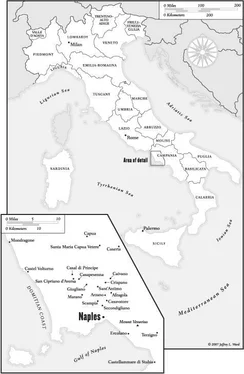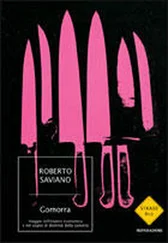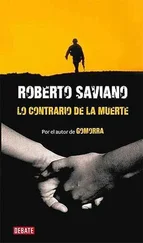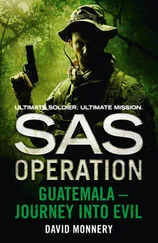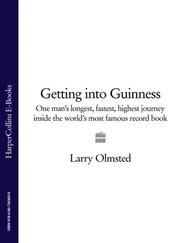Roberto Saviano - Gomorrah - A Personal Journey into the Violent International Empire of Naples’ Organized Crime System
Здесь есть возможность читать онлайн «Roberto Saviano - Gomorrah - A Personal Journey into the Violent International Empire of Naples’ Organized Crime System» весь текст электронной книги совершенно бесплатно (целиком полную версию без сокращений). В некоторых случаях можно слушать аудио, скачать через торрент в формате fb2 и присутствует краткое содержание. Жанр: Старинная литература, на английском языке. Описание произведения, (предисловие) а так же отзывы посетителей доступны на портале библиотеки ЛибКат.
- Название:Gomorrah: A Personal Journey into the Violent International Empire of Naples’ Organized Crime System
- Автор:
- Жанр:
- Год:неизвестен
- ISBN:нет данных
- Рейтинг книги:5 / 5. Голосов: 1
-
Избранное:Добавить в избранное
- Отзывы:
-
Ваша оценка:
- 100
- 1
- 2
- 3
- 4
- 5
Gomorrah: A Personal Journey into the Violent International Empire of Naples’ Organized Crime System: краткое содержание, описание и аннотация
Предлагаем к чтению аннотацию, описание, краткое содержание или предисловие (зависит от того, что написал сам автор книги «Gomorrah: A Personal Journey into the Violent International Empire of Naples’ Organized Crime System»). Если вы не нашли необходимую информацию о книге — напишите в комментариях, мы постараемся отыскать её.
Gomorrah: A Personal Journey into the Violent International Empire of Naples’ Organized Crime System — читать онлайн бесплатно полную книгу (весь текст) целиком
Ниже представлен текст книги, разбитый по страницам. Система сохранения места последней прочитанной страницы, позволяет с удобством читать онлайн бесплатно книгу «Gomorrah: A Personal Journey into the Violent International Empire of Naples’ Organized Crime System», без необходимости каждый раз заново искать на чём Вы остановились. Поставьте закладку, и сможете в любой момент перейти на страницу, на которой закончили чтение.
Интервал:
Закладка:
CEMENT
I had been away from Casal di Principe a long time. If Japan is the capital of martial arts, Australia of surfing, and Sierra Leone of diamonds, Casal di Principe is the capital of the Camorra’s entrepreneurial power. Being from Casale is a sort of guarantee of immunity around Naples and Caserta. It means that you’re larger-than-life, as if you emanated directly from the ferocity of Caserta’s criminal organizations. You enjoy a guaranteed respect, a sort of natural fear. Even Benito Mussolini wanted to eliminate this birthmark, this criminal aura; he rebaptized San Cipriano d’Aversa and Casal di Principe with the name Albanova—new dawn. And to inaugurate a new dawn of justice, he sent in dozens of carabinieri, who were supposed to resolve the problem “with iron and fire.” Today the only thing that remains of the name Albanova is the rusty train station in Casale.
Some guys spend hours hitting a punching bag, doing bench presses to sculpt their pecs, or take muscle enhancers, but for others a particular accent or a gesture is enough to bring back to life all the bodies on the ground covered with sheets. An old saying perfectly captures the lethal charge of the place’s violent mythology: “You can become a Camorrista, but you’re born a Casalese.” Or when you get into an argument with someone. You challenge your opponent with your eyes, and a second before the punching or stabbing starts, you declare your philosophy: “Life or death, it’s all the same to me!” At times your roots, your hometown, comes in handy: being associated with the violence can lend you a certain fascination. You can use it as veiled intimidation to get a discount at the movies or credit from a timid checkout girl. But it’s also true that your hometown saddles you with powerful prejudices, and you don’t really want to have to stand there and explain that not everyone is a clan affiliate, not everyone is a criminal; that the Camorristi are a minority. So you take a shortcut and come up with a more anonymous nearby town that will cancel any connection between yourself and the criminals: Secondigliano becomes a generic Naples, and Casal di Principe becomes Aversa or Caserta. You’re either ashamed or proud, depending on the moment and the situation. Like a suit of clothing, except it’s the suit that decides when to wear you.
Compared to Casal di Principe, Corleone is Disneyland. Casal di Principe, San Cipriano d’Aversa, Casapesenna. Fewer than one hundred thousand inhabitants, but twelve hundred of them have been sentenced for having ties to the Mafia, and a whole lot more have been accused or convicted of aiding or abetting Mafia activities. Since time immemorial this area has borne the weight of the Camorra, a violent and ferocious middle class led by its bloody and powerful clan. The Casalesi clan, which takes its name from Casal di Principe, is a confederation of all the Camorra families in the Caserta area: Castelvolturno, Villa Literno, Gricignano, San Tammaro, Cesa, Villa di Briano, Mondragone, Carinola, Marcianise, San Nicola La Strada, Calvi Risorta, Lusciano, and dozens of other towns. Each with its own area capo, each a part of the Casalesi network. Antonio Bardellino, the Casalesi clan founder, was the first in Italy to understand that cocaine would far surpass heroin in the long run. Yet heroin continued to be the mainstay of Cosa Nostra and many Camorra families. In the 1980s heroin addicts were considered to be literal gold mines, whereas coke was thought to be an elite drug. But Antonio Bardellino understood that big money was to be had by marketing a drug that didn’t kill quickly, that was more like a bourgeois cocktail than a poison for outcasts. So he created an import-export company that shipped fish flour from South America to Aversa. Fish flour that concealed tons of cocaine. Bardellino peddled heroin as well; the shipments to John Gotti in America were packed in espresso filters. An American narcotics squad once intercepted sixty-seven kilos of heroin, but it wasn’t a disastrous loss for the San Cipriano d’Aversa boss. A few days later he had a call put through to Gotti: “Now we’re sending twice as much another way.” From the marshes of Aversa was born a cartel that knew how to stand up to Cutolo, and the ferocity of that war is still imprinted in the genetic code of the Caserta clans. The Cutolo families were eliminated in the 1980s, in a few extremely violent operations. The De Matteos—four men and four women— were slaughtered in a few days. The only one the Casalesi spared was an eight-year-old boy. All seven members of the Simeone family were killed almost simultaneously. In the morning the powerful family was alive and well, but by that evening it was extinct. Butchered. In March 1982, the Casalesi positioned a field machine gun, the kind used in trenches, on a hill in Ponte Annicchino and picked off four Cutolo members.
Antonio Bardellino was affiliated with Cosa Nostra, was tied to Tano Badalamenti, and was a friend and companion of Tommaso Buscetta, with whom he had shared a villa in South America. When the Corleones swept away the Badalamenti-Buscetta power, they also tried to eliminate Bardellino, but in vain. During the rise of the Nuova Camorra Organizzata, the Sicilians also tried to eliminate Raffaele Cutolo. They sent a hit man, Mimmo Bruno, over on the ferry from Palermo, but he was killed as soon as he set foot outside the port. Cosa Nostra had always had a sort of respect and awe of the Casalesi, but when in 2002 they killed Raffaele Lubrano—the boss of Pignataro Maggiore, a man with close ties to Cosa Nostra, having been handpicked by Totò Riina—many feared a feud would explode. I remember being at a newsstand the day after the ambush and hearing the vendor murmuring to a customer:
“If the Sicilians come here to fight now too, we won’t have peace for three years.”
“Which Sicilians? The Mafiosi?”
“Yes, the Mafiosi.”
“The Mafia should get down on their knees in front of the Casalesi and suck. That’s it, just slurp it all up.”
One of the declarations about the Sicilian Mafiosi that shocked me most was made by the Casalesi pentito Carmine Schiavone in a 2005 interview. He talked about Cosa Nostra as if it were an organization enslaved to politicians and, unlike the Caserta Camorristi, incapable of thinking in business terms. According to Schiavone, the Mafia wanted to become a sort of antistate, but this was not a business issue. The state-antistate paradigm doesn’t exist. All there is, is a territory where you do business—with, through, or without the state:
We lived with the state. For us the state had to exist and it had to be that state, except that our philosophy was different from the Sicilians. Whereas Riina came from island isolation, an old shepherd from out of the mountains, really, we had surpassed those limits and we wanted to live with the state. If a state figure stonewalled us, we would find someone else who was willing to help us. If it was a politician, we wouldn’t vote for him, and if it was an institutional figure, we would find a way to swindle him.
Carmine Schiavone, Sandokan’s cousin, was the first to take the lid off the Casalesi clan’s business affairs. When he decided to cooperate with the law, his daughter Giuseppina’s condemnation of him was fierce, more lethal than a death sentence. Her fiery words were printed in the newspaper:
“He’s a big fraud, a liar, a bad man, and a hypocrite who has sold his failures. A beast. He never was my father. I don’t even know what the Camorra is.”
Businessmen. That’s how the Caserta Camorristi define themselves, nothing more than businessmen. A clan made up of violent company men and killer managers, of builders and landowners. Each with his own armed band and linked by common economic interests. The Casalesi cartel’s strength has always been its ability to handle large drug lots without needing to feed an internal market. They are present on Rome’s vast drug market, but more significant is their role in the sale of huge consignments. The 2006 acts of the Anti-Mafia Commission indicate that the Casalesi were supplying the Palermo families with drugs. Alliances with Nigerian and Albanian clans meant they no longer had to be involved in direct peddling and narcotrafficking operations. Pacts with clans in Lagos and Benin City, alliances with Mafia families in Priŝtina and Tirana, and agreements with Ukrainian Mafiosi in Lviv and Kiev liberated the Casalesi from bottom-rung criminal activities. At the same time the Casalesi received privileged treatment in investments in Eastern Europe and in the purchase of cocaine from Nigeria-based international traffickers. New leaders and new wars. It all happened after the explosion of the Bardellino clan, the origin of the Camorra’s entrepreneurial power in this area. Antonio Bardellino, having achieved total dominion in every legal and illegal economic sector, from narcotraffic to construction, settled in Santo Domingo with a new family. He gave his Caribbean chil-dren the same names as those in San Cipriano—a simple, easy way of avoiding confusion. His most loyal men held the reins of power back home. Having emerged unscathed from the war with Cutolo, they developed companies and established their authority, expanding everywhere in northern Italy and abroad. Mario Iovine, Vincenzo De Falco, Francesco Sandokan Schiavone, Francesco Cicciotto di Mezzanotte Bidognetti, and Vincenzo Zagaria were the capos of the Ca-salese confederation. In the early 1980s Cicciotto di Mezzanotte and Sandokan headed up the clan’s military operations, but they were also businessmen with widespread interests, eager to control the enormous, many-headed beast of the confederation. They realized that Mario Iovine was too close to Bardellino, however; he did not approve of their desire for autonomy. So they devised a mysterious but politically effective strategy. They used the cantankerous nature of Camorra diplomacy in the only way that would let them achieve their goals: they sparked an internal war.
Читать дальшеИнтервал:
Закладка:
Похожие книги на «Gomorrah: A Personal Journey into the Violent International Empire of Naples’ Organized Crime System»
Представляем Вашему вниманию похожие книги на «Gomorrah: A Personal Journey into the Violent International Empire of Naples’ Organized Crime System» списком для выбора. Мы отобрали схожую по названию и смыслу литературу в надежде предоставить читателям больше вариантов отыскать новые, интересные, ещё непрочитанные произведения.
Обсуждение, отзывы о книге «Gomorrah: A Personal Journey into the Violent International Empire of Naples’ Organized Crime System» и просто собственные мнения читателей. Оставьте ваши комментарии, напишите, что Вы думаете о произведении, его смысле или главных героях. Укажите что конкретно понравилось, а что нет, и почему Вы так считаете.
